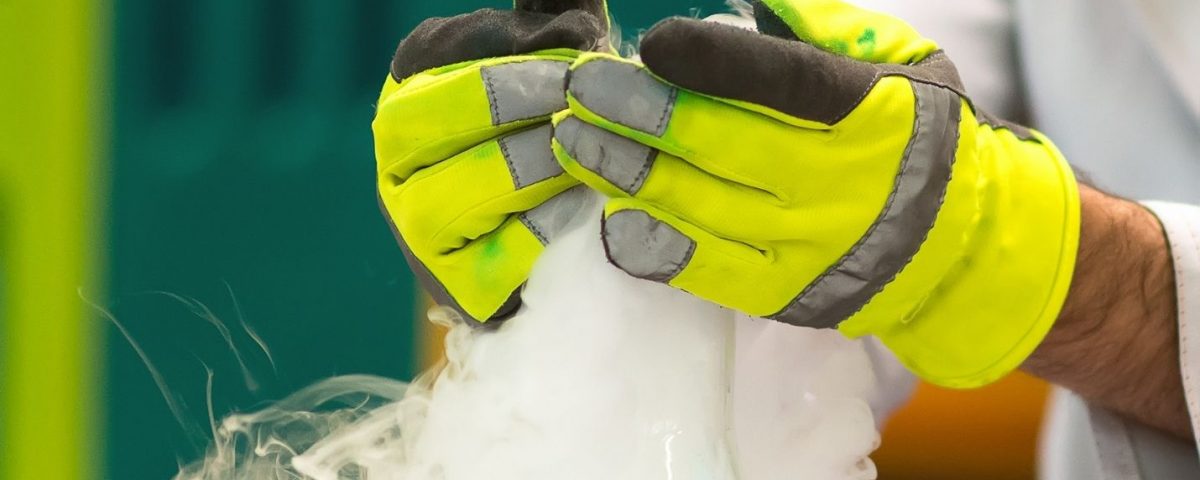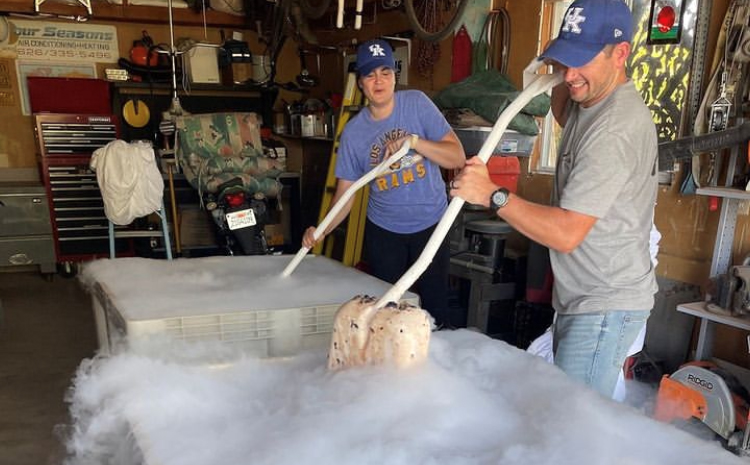Dry Ice Safety Tips

Dry ice is an excellent resource for science experiments, crafts, outdoor adventures and even completing household chores. But dry ice can be dangerous if the proper safety precautions are not in place to protect users and observers.
When working with dry ice, it is important to make sure you know how to properly handle it to ensure safer usage. Where should you store dry ice? How should you handle it? Is it safe to consume?
Let’s take a closer look and dive in to find out – and learn our top dry ice safety tips!
Is dry ice safe to consume?
No – dry ice is not safe to consume. The human body is not built to digest dry ice, so you should not eat or drink dry ice. You should also never eat or drink anything made with dry ice in it, as it can cause significant damage to your mouth or throat.
How should I handle dry ice?
Dry ice is extremely cold. With a temperature of -109.3°F (-78.5°C), touching dry ice directly without any protective gear can seriously irritate your skin and even lead to frostbite. Wearing insulated gloves and using tongs to handle or move dry ice can help protect your skin from damage. For extra protection, you can also wrap the dry ice in an insulating material while handling.
Remember to keep dry ice away from your face and do not make direct contact with your skin. For extra protection, wear safety goggles to protect your eyes in case of an accident.
Where should I store dry ice?
An insulated container that is not tightly sealed is the best way to safely store dry ice. Tightly sealed, airtight containers prevent gas from escaping and can cause pressure to build up inside the container leading to a potentially dangerous explosion. For this reason, dry ice should not be stored in airtight coolers.
Dry ice should be stored out of reach of children and pets. As an extra precaution, mark the container as containing dry ice to avoid any surprises when opening!
Where should I use dry ice?
When working with dry ice, station yourself outside or in a well-ventilated area that gives you and others room to breathe. Dry ice is the solidified form of carbon dioxide (CO2). As it “melts,” dry ice emits carbon dioxide in the form of gas, which can cause suffocation in an enclosed, unventilated space.
Can my kids safely play with dry ice?
Dry ice should only be used under adult supervision. While it can be used for a multitude of fun, educational activities and experiments, it is important to closely monitor children as they handle dry ice to make sure they follow all safety guidelines, wear proper safety gear and do not consume dry ice.
How do I safely dispose of dry ice?
When disposing of dry ice, allow it to “melt” or sublimate in an open, well ventilated area. Do not dispose of dry ice in a sewer, sink, garbage disposal or garbage chute. The release of carbon dioxide in these areas could allow gas to accumulate and build up pressure, leaving room for a potential accident. Do not leave dry ice unattended with children or pets.
Instagram: @penguindryice
Facebook: @dryiceideas
Pinterest: Penguin Brand Dry Ice®
Twitter: @PenguinDryIce

